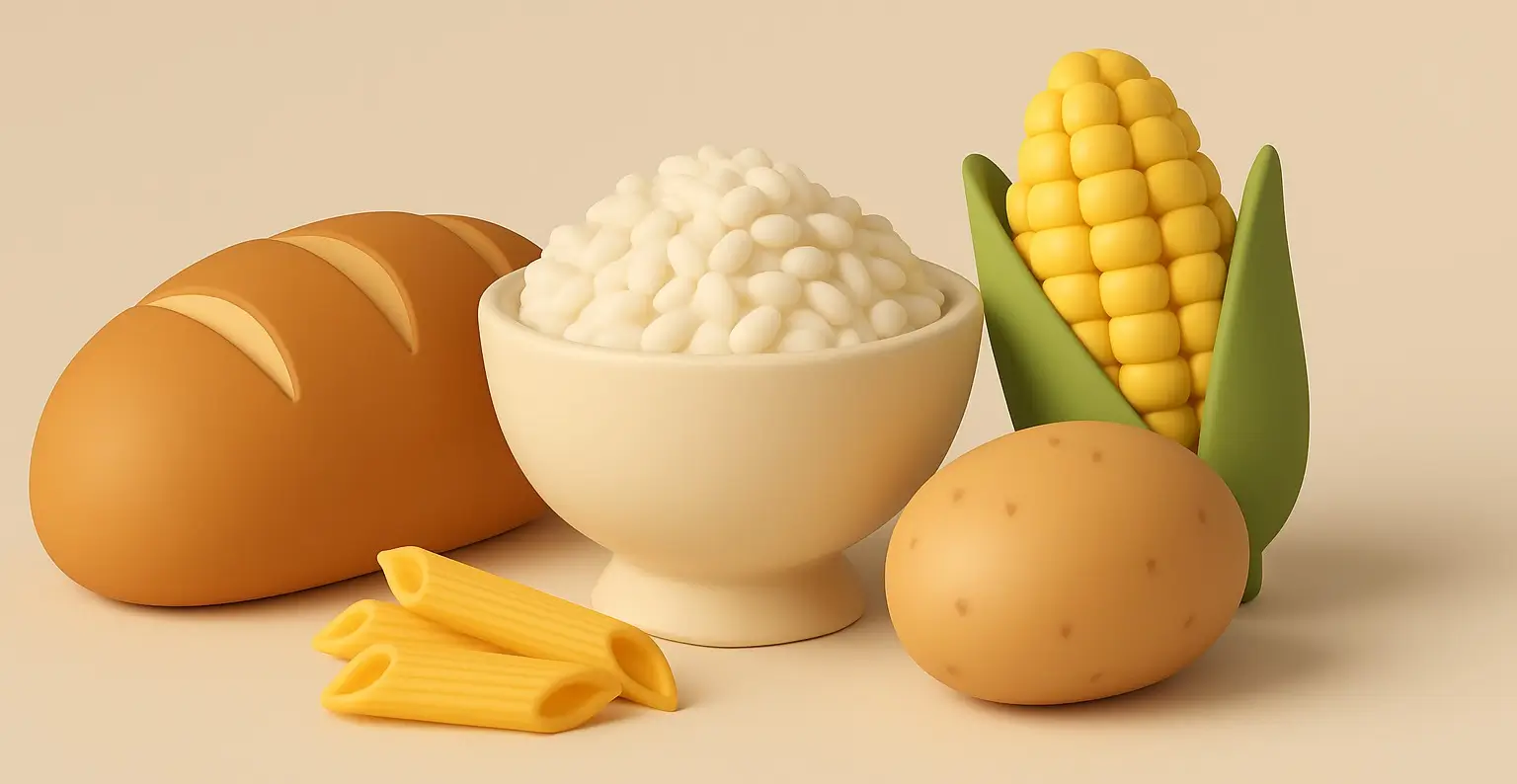- Carbohydrate are vital organic molecules composed of carbon, hydrogen, and oxygen atoms, typically in a ratio of 1:2:1.
- These molecules play a pivotal role as an essential nutrient and primary energy source for most living organisms, besides serving structural functions in some instances.
Classification of Carbohydrate

- Carbohydrate are categorized based on their complexity into:
-
Monosaccharides (Simple Sugars):
- Definition: Single sugar units, the simplest form of carbohydrates.
- Examples: Glucose, Fructose, Galactose.
- Function: Immediate energy source, building blocks for more complex carbohydrates.
-
Disaccharides (Two Monosaccharides):
- Definition: Formed by the linkage of two monosaccharides through a glycosidic bond.
- Examples:
- Sucrose = Glucose + Fructose
- Lactose = Glucose + Galactose
- Maltose = Glucose + Glucose
- Function: Serve as energy sources and transportable sugar forms.
-
Polysaccharides (Complex Carbohydrates):
- Definition: Long chains of monosaccharides linked by glycosidic bonds.
- Examples:
- Starch (plants) – Energy storage
- Cellulose (plants) – Structural support
- Glycogen (animals) – Energy storage
- Function: Provide energy storage and structural integrity.
Comparison Table: Carbohydrate Types
| Classification | Complexity | Bond Type | Taste | Function | Examples |
| Monosaccharides | Simple sugars | N/A | Sweet | Energy source, building blocks | Glucose, Fructose, Galactose |
| Disaccharides | Two monosaccharides | Glycosidic bond | Sweet | Energy source, transport sugars | Sucrose, Lactose, Maltose |
| Polysaccharides | Long sugar chains | Glycosidic bonds | Tasteless | Energy storage, structural support | Starch, Cellulose, Glycogen |
Properties of Carbohydrate
-
Solubility:
- Monosaccharides and disaccharides dissolve in water, while polysaccharides are less soluble due to their large molecular size.
-
Taste:
- Simple sugars (monosaccharides and disaccharides) are sweet, whereas polysaccharides are generally tasteless.
-
Reducing Properties:
- Some carbohydrates (e.g., glucose, fructose) act as reducing agents, donating electrons in chemical reactions.
Functions of Carbohydrate
-
Energy Source:
- Glucose is the primary energy molecule, broken down via cellular respiration to produce ATP.
-
Energy Storage:
- Glycogen (animals) and starch (plants) serve as energy reserves.
-
Structural Components:
- Cellulose (plant cell walls) and chitin (arthropod exoskeletons) provide rigidity and support.
-
Cell Signaling:
- Carbohydrates attached to proteins or lipids participate in cell recognition, adhesion, and communication.
Examples of Carbohydrates
- Glucose: A monosaccharide, central to energy metabolism in living organisms.
- Sucrose: A disaccharide (table sugar), found in fruits and plants.
- Starch: A polysaccharide, serving as an energy storage molecule in plants (found in rice, potatoes, and corn).
Chemical Nature and Biological Role
-
Chemical Nature of Carbohydrate:
- Carbohydrates, ranging from simple sugars like monosaccharides to complex forms like polysaccharides, are organic compounds characterized by their specific carbon, hydrogen, and oxygen composition.
- Their structure, from simple to complex, determines their function and role in living organisms.
-
Biological Role of Carbohydrate:
- Energy Source: Serving as the primary energy source, carbohydrates are metabolized to glucose, which is then utilized to generate ATP.
- Energy Storage: Organisms store energy as glycogen (in animals) or starch (in plants), providing an energy reserve for future needs.
- Structural Component: Carbohydrates such as cellulose and chitin provide structural integrity to plants and some animals.
- Cell Signaling: Carbohydrates attached to proteins or lipids on cell surfaces are crucial for cell recognition, adhesion, and signaling processes.

